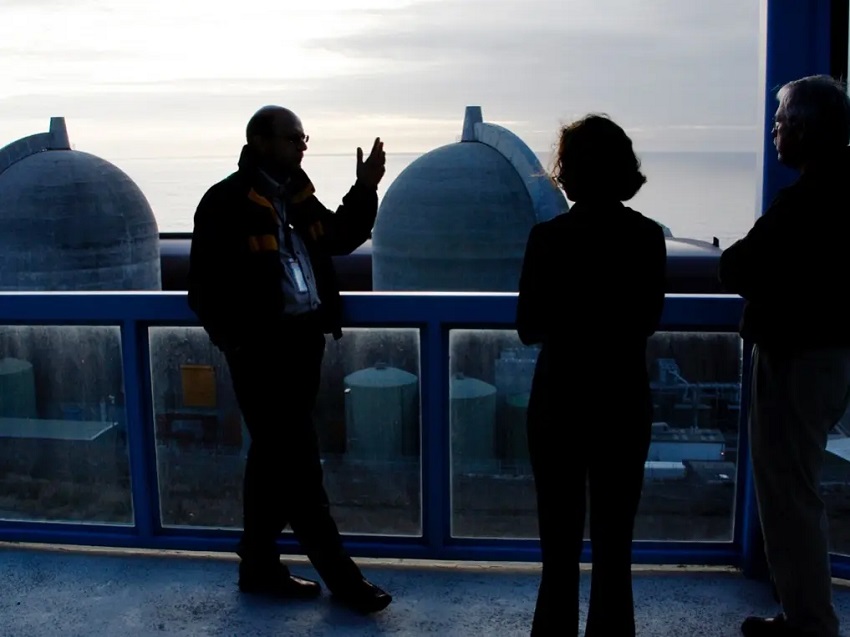Napa, CA – Diablo Canyon, California’s last operational nuclear power plant, is embracing artificial intelligence (AI) to streamline its operations, but some lawmakers and experts are urging caution as the technology’s role in the nuclear industry grows. The plant, located in San Luis Obispo County, recently entered a groundbreaking partnership with the AI startup Atomic Canyon, marking the first on-site generative AI deployment at a U.S. nuclear facility.
The collaboration, which includes the installation of eight high-powered NVIDIA H100 graphical processors, is aimed at improving the plant’s efficiency in navigating the vast, complex regulatory and technical documentation required for nuclear operations. The AI tool, Neutron Enterprise, is designed to assist Diablo Canyon employees by providing quick access to relevant documents, reducing the time spent sifting through millions of pages of intricate Nuclear Regulatory Commission (NRC) reports and records. PG&E, the plant’s operator, has forecasted a full deployment of the system by the third quarter of 2025.
For now, Neutron Enterprise is focused on one task: helping workers search through regulatory data more efficiently. PG&E estimates that employees currently spend around 15,000 hours annually searching databases and records, a figure the company hopes to significantly reduce with the help of AI. Maureen Zawalick, PG&E’s vice president of business and technical services, likens the AI tool to a “data-mining copilot,” but emphasizes that it will not make decisions—humans will continue to be responsible for all critical judgments.
Trey Lauderdale, the CEO of Atomic Canyon, echoes this sentiment. He stresses that while the tool can assist in finding pertinent information, it will not be used for decision-making in the plant’s operations. Lauderdale, who has experience in healthcare technology, underscores that his aim is simply to help Diablo Canyon employees access necessary data more quickly and efficiently.
“We probably spend about 15,000 hours a year searching through our multiple databases and records and procedures,” Zawalick says. “This is going to shrink that time way down.”
Despite the limited scope of AI’s current application, some experts and lawmakers are raising concerns about the future implications of AI in nuclear energy. Tamara Kneese, director of the Climate, Technology, and Justice program at the nonprofit Data & Society, acknowledges that AI can be helpful for efficiency in narrow tasks. However, she cautions against relying too heavily on the technology in sensitive sectors like nuclear power, particularly when it comes to more complex applications.
“Trusting PG&E to safely use generative AI in a nuclear setting is something that deserves more scrutiny,” Kneese says.
California State Assemblymember Dawn Addis, who represents the San Luis Obispo area, shares similar concerns. While she supports the potential for technological advancements, she also emphasizes the need for clear regulations to ensure AI is deployed safely, particularly in sensitive settings like Diablo Canyon. “I have many unanswered questions about the safety, oversight, and job implications for using AI at Diablo,” she says.
As AI use in the nuclear sector expands, experts are calling for stronger regulatory oversight to ensure safety. The NRC, which has explored the issue of AI in nuclear plants, has yet to establish clear guidelines or standards for the technology’s use. A report by the NRC’s inspector general in November 2024 highlighted AI and machine learning as one of the agency’s major challenges, noting significant regulatory gaps in the nuclear energy industry.
PG&E and Atomic Canyon have been proactive in keeping the NRC informed about their plans, but there is still uncertainty about the direction of AI integration in the industry. “As we start to traverse into applications that do introduce risk, we absolutely will want guardrails and regulation to make sure that AI is properly deployed,” Lauderdale says.
While some California lawmakers are cautiously supportive of AI’s role at Diablo Canyon, they stress the importance of balancing innovation with safety. Democratic Senator Scott Wiener, who has advocated for AI safety legislation, emphasizes the need to establish standards and safeguards before AI is integrated into more critical aspects of nuclear operations.
“It’s really, really important to beef up government capacity to set standards around the use of AI in sensitive contexts such as a nuclear power plant,” Wiener says.
The partnership between PG&E and Atomic Canyon represents a cautious first step toward the broader use of AI in nuclear energy. However, as the technology’s potential grows, so too do the concerns about its implications for safety, oversight, and public trust. With AI poised to play an increasingly important role in the nuclear industry, lawmakers, experts, and regulators will need to carefully navigate the risks and rewards of this powerful new tool.

